Resources
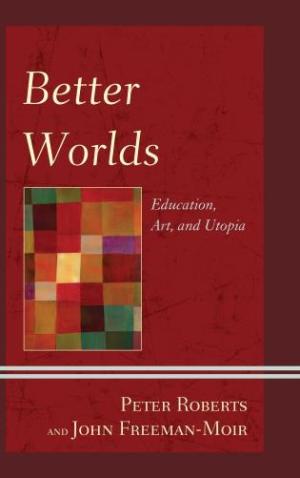
Better Worlds: Education, Art, and Utopia does not immediately relate to theological education. However, it does cover interesting and thought-provoking topics of potential use for those working in the theological school classroom. Yearnings for utopia express a desire akin to awaiting the Kingdom of God. Therefore, looking at ways the trope of utopia is formulated in the fields of education and the arts can provide interesting parallels for the theological school classroom. The core question is what would a better world look like? Roberts and Freeman-Moir take the reader through a sweeping survey of topics. In one section, John Dewey and William Morris’s utopian philosophies provide a backdrop for the discussion of utopias as places where each person can practice skilled craftsmanship, developing a craft to the point where it becomes artisanal. In chapter 2, visual art as a dystopian tool is regarded as something that can evoke true sympathy. The authors invite readers into various imaginative spaces to consider how imaginative sympathy can propel us into action, or at least into moral discomfort caused by the difference between the present world and imagined utopian dreams. Chapter 4 discusses the role of images, showing their power as pathways to action that open the imagination to craft a space of deciding and reflecting. This is similar to the praxis-theory-praxis loop championed by many theologians and seminary educators. For the theological educator, perhaps the most à propos chapters are those concerned with the liberation pedagogy of Paulo Freire and the literature of Fyodor Dostoevsky and Hermann Hesse. The chapter on Freire’s liberation framework provides a useful overview of his life and work with a focus on his utopian realism. The chapters on Dostoevsky and Hesse provide interesting analyses of their theologies and philosophies. I have two main critiques of this text. First, the authors spotlight too few female utopian visionaries. Chapter 3 focuses on writer and philosopher Iris Murdoch, but this is by far the weakest chapter in the book. The authors are clearly aware of feminist (or at least female scholars’) viewpoints in the various fields they describe. The book would have been stronger had they chosen at least one compelling female figure’s utopian or dystopian vision to unpack and describe. My second criticism is that the chapters are fairly disjointed, each chapter representing a different topic and field, and there is no final conclusion that draws all the themes together. The authors put forth education as “utopian curiosity” (107), where each opportunity for knowledge-building provides entry into a world larger, more spacious, and more creative than the one in which the student previously lived. Allowing these alternate worlds to wash over faculty imagination may provide ways to take critical looks at the contemporary roles of theological educators and to invite questions such as: What are the aims and purposes of theological education and how do they compare to utopian and dystopian visionary aims and purposes? What is the role of the theological educator in this process? What does pedagogy look like if faculty seek to go beyond simple information sharing to something more complex and critically reflective?
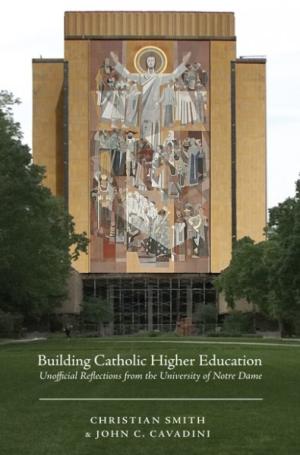
In this slim volume, Christian Smith, a sociologist of religion on the faculty of the University of Notre Dame, takes on a pivotal question for the future of Catholic higher education: faculty engagement with Catholic intellectual tradition. Exploring the convergence of Notre Dame’s three strategic goals – to provide an unparalleled undergraduate education, to gain recognition as a globally premier research university, and to remain thoroughly and distinctively Catholic – Smith brings into sharp focus two fundamental issues: (1) that any faith-grounded university’s capacity to fulfill its mission rises and falls on the knowledge, quality, and dispositions of its faculty; and, (2) that Catholic universities must wrestle with how their faculties engage Catholic intellectual tradition in their academic disciplines. His wrestling with these issues makes the book worth reading for anyone involved in faith-based higher education. In the first chapter Smith lays out the texts from which he will work: the University of Notre Dame’s mission statement, Fr. John Jenkins’ inaugural presidential address, excerpts from Jenkins’ annual addresses to faculty, and Provost Tom Burish’s letter announcing a committee to explore hiring outstanding Catholic faculty. In four subsequent chapters Smith details the assumptions behind these texts with their implications for faculty; elaborates a range of ways that faculty, whether Catholic or not, can support Notre Dame’s mission; proposes what the pursuit of social science disciplines might entail in a context where Catholicism matters; and, takes a hard look at whether it is possible for Notre Dame, or any other faith-grounded university, to pursue three goals simultaneously – unparalleled undergraduate education, premier research status, and robust engagement with the Catholic thought across all disciplines. (He doubts that it is.) A paper by John Cavadini on the role of theology in a Catholic college or university serves as the appendix. Smith’s dialectical approach emphasizes boundaries. He asserts that universities “cannot meaningfully call themselves ‘Catholic’” unless “Catholicism as a distinctive approach to life and the world” significantly influences intellectual inquiry, scholarship, and teaching; initiatives in valuing social justice or in spiritual formation will not suffice (65). His chapter detailing the “tensions, trade-offs, and dangers” involved in attempting to achieve excellence in undergraduate education and premier research status “in an institutional, cultural, and pedagogical context that is robustly Catholic” is refreshingly practical and pragmatic (78). Smith recognizes the challenge involved in an academic department attempting to maintain coherence with some faculty focused on teaching, others on research, and still others on Catholic dimensions of a discipline. At points Smith is nostalgic for an era when Catholic universities were Catholic by virtue of their enmeshment in the webs of a subculture. He is far more anxious about the prospects for maintaining the Catholic character of universities than is John Haughey, S.J., whose Where is Knowing Going? The Horizons of the Knowing Subject (Georgetown University Press, 2009) offers an alternative, analogical approach to the question. Still, Smith makes his case that Catholic universities cannot maintain a robust Catholic identity without a critical mass of faculty members who both understand and engage Catholic thought and life critically and faithfully. Read together, Smith and Haughey could animate a vital conversation in which Catholic college and university faculties need to participate.
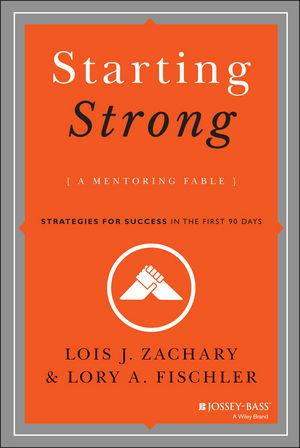
Lois J. Zachary and Lory A. Fischler’s Starting Strong is an accessible book that has varying use depending on one’s institution. The book is composed in two sections. The first is a fable situated within a large corporation that has multiple divisions and an official mentoring program. The main characters are Cynthia, a VP of Marketing and Communications, and Rafa, a newly hired financial analyst. The fable follows them through six mentoring conversations and maps their mutual development. The second section is a summary and strategy for having those same conversations in your own mentoring relationships. Zachary and Fischler’s writing is easily absorbed and their ideas about mentoring presented in the form of a dialogue allow readers to imagine themselves in similar conversations whether they are a mentor or mentee. Scholars who are in institutions with formalized mentorship programs may find this to be a helpful book because it can assist with structuring early mentorship meetings, setting boundaries and goals, and setting the stage for both mentors and mentees to benefit from a mentoring relationship from the beginning. Starting Strong’s weakness for those teaching and learning in Religious Studies and Theology is that the book’s corporate setting results in some mentoring relationships that are hard – if not impossible – to copy to the relationships in which most professional academics will engage. For example, Cynthia has no power over Rafa. She is only a mentor, there for his development. This model excludes the teacher-student relationship in which mentoring takes place -- where assessment is a significant obstacle to overcome toward building rapport with students. So long as teachers hold the power to evaluate students, then the mentorship relationship Zachary and Fischler imagine does not happen in academia. By the same token, unless your institution has a formalized mentorship program that explicitly takes people out of their colleges and departments and into relationships with people in other faculties, the risks to tenure and promotion from a mentor who works closely with one’s supervisors does not allow for the kinds of open exchanges and risks Cynthia and Rafa take in developing Rafa’s leadership skills. Zachary and Fischler did not write this book for academics, but if academics are going to think about mentorship and the development of students and faculty then the question of how that might be done within higher education’s hierarchies needs to be asked. It is worth the time to think about how to formalize mentorship programs into specific institutions – both for students and faculty – and this book can help once those programs are implemented. For those who are looking for a book that can help start the process of mentoring someone, including graduate students, then this is a useful book to mine for ideas, especially the second section in which the authors summarize the conversations one needs to have to achieve mentoring success in the first ninety days. I recommend Starting Strong as a resource for graduate student supervisors, but its assumptions do not translate as well into undergraduate mentorship.
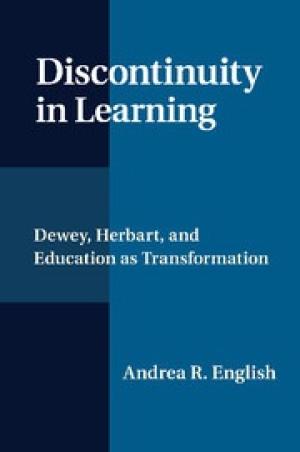
Andrea R. English’s Discontinuity in Learning re-links the work of Johann Friedrich Herbart with that of John Dewey. Dewey criticized Herbart’s work, causing, English argues, future critics to separate Dewey’s thought from its European predecessors (xx). English argues for continuity, that both thinkers want to identify and develop ways “for learners to recognize and respond to the other in judgments and actions” (104), through the experience of discontinuity. English’s excellent analysis of Herbart focuses on discontinuity, offering frameworks to analyze educational theories and practices that ignore discontinuity and reconnecting Anglo-American and Continental philosophies of education (xxiii-xxiv). I cannot do justice to this rich book here. I will focus on its main idea: education as discontinuity. English examines Herbart’s analysis of the educational possibilities in his contemporary’s (Kant’s) Categorical Imperative. To act so as not to treat others as things and as any other ethical person would act, one engages in moral choice. Herbart argues that educators can work with the experience of the discontinuous that emerges in encounter with the “other,” identifying where a learner already acts out of inner freedom (46) to move that learner to greater freedom, the capacity beyond “self-interested desires,” in recognition of and respect for the other (7). Discontinuity causes a pause (34) at the limits of one’s abilities and/or knowledge (xxii). This “in-between” (Dewey), “distance” (Herbart 16, 27), or “break” (English, 17) is a site of struggle (59) to transcend a limit. There, the learner can “identify and potentially change” her relation to the other (65). A teacher does not choose for the student, but designs an intellectual experience, to use Donald Finkel’s term, to scaffold the struggle (17), while, simultaneously, being open to improvisation on the design. Dewey agrees with Herbart: discontinuity is to “undergo or suffer the world” that upsets stable understandings (66), a starting-point for reflection (68). In learning, teacher and student struggle together in ongoing “critical self-relation.” For Dewey, the classroom is not just a site of moral struggle but of democratic action (89). Arriving at the social, as well as personal, “limits of thought and ability” (102), one learns, potentially, to choose for the good of all. Both the classroom and democratic society should support the deep learning that ensures freedom. For Dewey and Herbart, the goal of learning is right orientation to the other (105) through disorientation and reorientation, guided by the teacher who listens intently and generates dialogue, moving students to greater inner freedom and just action. The skilled teacher deploys “pedagogical tact” (50ff, 126ff.), discerning when to intervene in student learning and when to improvise (129) on the learning design. Neither teaching nor learning, therefore, can be determined as complete in outcomes and measured fully by evaluations. Nowadays we experience such “urgency” (55) about measures that we want to “predetermine” and “guarantee” learning (156). English argues, instead, for cherishing the discontinuous and valuing the improvisational space of the classroom in which teachers “acquaint the next generation” with their present world and prepare them for a “future yet to be discovered” (160).
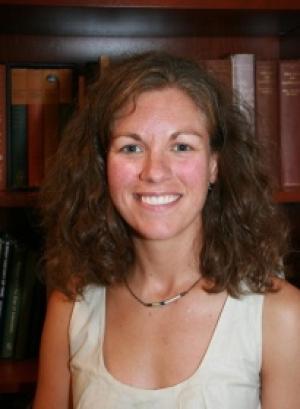
Molly Bassett Associate Professor of Religious Studies Georgia State University At the end of the term, I like to do three things: wrap up the class, ask students to take an informal course evaluation, and eat cookies. (These are the best ginger spice cookies on the planet. You’re welcome.) In

Nancy Lynne Westfield Associate Professor of Religious Education Drew Theological School Please indulge this low-grade rant. I believe the notion of “safe space” in adult classrooms is un-interrogated and oversubscribed. The question is … Safe for whom? Well-intentioned teachers, in wanting students to attempt deep conversation, wrongly presume adult students..

Theological school deans are not just theological leaders for their institution, they must be EDUCATIONAL leaders. That is, they must implement sound educational practices related to curriculum, instruction, supervision, assessment, and administration. There is a variety of ways to assess...
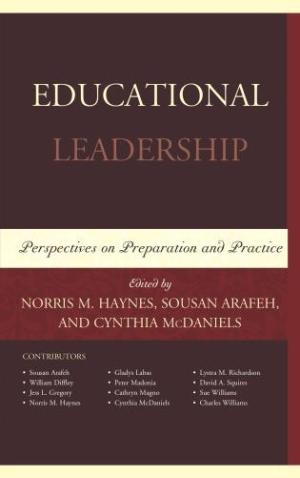
National and global cultural constructs are changing faster than ever, oftentimes faster than those who educate can keep apace of. The challenge presented in this volume is clearly stated in Haynes’s introduction: Education leaders “must accept responsibility for accessing and mobilizing all available resources to support students’ total development and for demonstrating that they are making a significant and measurable positive difference in turning present educational trends around” (viii). A popular mantra of leadership theory as first proposed by James McGregor Burns, John Maxwell, and Max De Pree, and later repopularized by Jim Collins, Malcolm Gladwell, Chip and Dan Heath, and Michael Hyatt, is that leaders are responsible for creating organizational culture. Therefore it is imperative that educators, both those who are currently in leadership positions (discipline chairs, principals, superintendents, school board representatives, and so forth) and those who aspire to leadership positions, take seriously this challenge of creating a culture for effective learning by demonstrating that they are effective leaders and worthy of being followed. Following the challenge-laden Introduction, the volume is divided into three sections, with each section focusing on a different aspect of educational leader development. Each section opens with a short introduction from one of the editors. The first section (chapters 1 to 4) focuses on “core knowledge” elements for teachers and educational leaders, such as public policy (chapter 1), Knowles’ theory of self-directed andragogy (chapter 2), Goleman’s theory of emotional intelligence (chapter 3), and education as social justice (chapter 4). The second section (chapters 5 to 9) focuses on professional development for educational leaders, such as developing an ecological framework for the educational setting (chapter 5), leading educational reform (chapter 6 and 8), developing a global perspective on education (chapter 7), and seeking continuing education once on the field (chapter 9). The final section (chapters 10 to 14) suggests strategies for improving the learning experience, such as utilizing applied research (chapter 10) and program evaluation (chapter 11), developing a multicultural approach to learning (chapter 12), and implementing balanced curriculum (chapter 13) and technology (chapter 14) into the teaching model. This volume would be most applicable to a course in educational leadership development. It certainly draws from the wealth of the experience provided by the contributors. It is most appropriate for elementary and secondary educators and educational leaders (and those who instruct in that field). However it does have value for those who teach in other disciplines at the undergraduate or graduate level. I found the chapters on policy and balanced curriculum to be most helpful. There are a couple of concerns that should be noted: First, while it is subtle, there is a tinge of socialist rhetoric used throughout the volume. It is most prominent in chapter 4 where the co-authors equate social justice with socialist reform. Second, there is a sense of almost blind acceptance, despite the growing amount of evidence-based literature to the contrary, of Common Core standards throughout the book. Both of these concerns go hand-in-hand and should be considered by the prospective reader.

Molly BassettAssociate Professor of Religious Studies Georgia State University The day before the American Academy of Religion’s annual meeting, I went to THATCamp. THAT stands for “The Humanities and Technology Camp,” and it’s an unconference, which is nothing like an unhappy birthday except that there was tea. Participants create...
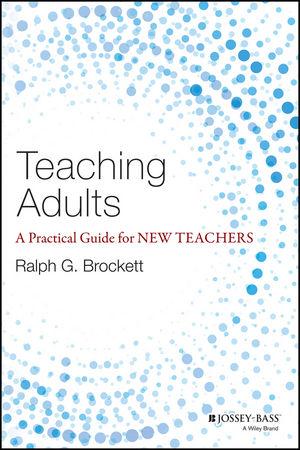
Ralph Brockett has spent his career on the leading edge of adult learning theory and practice. He is widely published, a master in the classroom, and – having been inducted into the International Adult and Continuing Education Hall of Fame in 2005 (among other accolades) – has earned the respect and admiration of his peers. In Teaching Adults: A Practical Guide for New Teachers, Brockett takes the posture of a caring mentor to provide a succinct and accessible introduction to the dynamic field of adult learning. His style is conversational, his expertise evident, and he is clearly most interested in helping to equip you, the teacher, with very practical advice for teaching adults in a wide variety of formal and informal learning contexts. Teaching Adults is written for a variety of readers. Brockett suggests an audience that may include a professional tasked with offering a training session in her field, a layperson asked to teach an adult Sunday School class, and a scout leader needing to orient a cadre of adult volunteers. In addition, the book is applicable to those who may not primarily think of themselves as teachers, but who nevertheless spend a fair amount of time teaching – such as ministers, social workers, and health care professionals. Further, higher education professors and instructors will find this book valuable. As Brockett rightly points out, these educators are not always equipped to meet the unique needs of an ever-increasing population of adult learners. Finally, this book can benefit graduate students in the field of adult education, helping to further define and map the foundational concepts of adult learning. Teaching Adults is organized around a simple formula: effective teaching leads to successful learning! To illustrate this, Brockett weaves together (1) seven essential attributes of effective teachers and (2) four keys to effective teaching. To describe the qualities of effective teachers, Brockett continually reinforces seven characteristics: trust, empathy, authenticity, confidence, humility, enthusiasm, and respect. Attending to these essential qualities has a distinctive impact on the success of an adult learning event. Similarly, the four keys of effective teaching (know the content, know the adult learner, know about teaching, and know yourself) help to steward learning for maximum transfer and impact. Especially helpful in processing these concepts are the end-of-chapter “think about it” exercises and focused listings of additional resources. Teaching Adults is an accessible and valuable primer. New and seasoned teachers alike will find practical resources for honing their skills, whatever their educational context. As a basic, introductory text, this book is not peppered with citations and endnotes; however, its bibliography serves as an essential reading list for those new to the field of adult learning theory. I would venture to suggest one drawback: despite its focus on new teachers there is a noticeable lack of discussion of new and emerging learning modalities (such as online environments). The concepts from the book are certainly applicable to all forms of teaching and learning, but an explicit mention of how these could be worked out in the online environment would have reflected the educational learning experiences for many new teachers and learners. The book does contain a self-made remedy, however. The end-of-chapter reflection questions provide teachers from any background with the implicit wisdom needed for addressing the diverse and ever-changing landscape of teaching and learning.
Wabash Center Staff Contact
Sarah Farmer, Ph.D
Associate Director
Wabash Center
farmers@wabash.edu